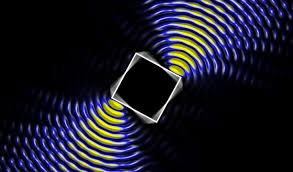
Breaking News
 Is Yen Carry Trade's unwind about to trigger a repo market meltdown? Let's dive into the mec
Is Yen Carry Trade's unwind about to trigger a repo market meltdown? Let's dive into the mec
 Chairman Rand Paul Releases New Report Revealing Hundreds of Billions...
Chairman Rand Paul Releases New Report Revealing Hundreds of Billions...
 Get Schiffty Music Video | Rick and Morty | Adult Swim
Get Schiffty Music Video | Rick and Morty | Adult Swim
Top Tech News
 This tiny dev board is packed with features for ambitious makers
This tiny dev board is packed with features for ambitious makers
 Scientists Discover Gel to Regrow Tooth Enamel
Scientists Discover Gel to Regrow Tooth Enamel
 Vitamin C and Dandelion Root Killing Cancer Cells -- as Former CDC Director Calls for COVID-19...
Vitamin C and Dandelion Root Killing Cancer Cells -- as Former CDC Director Calls for COVID-19...
 Galactic Brain: US firm plans space-based data centers, power grid to challenge China
Galactic Brain: US firm plans space-based data centers, power grid to challenge China
 A microbial cleanup for glyphosate just earned a patent. Here's why that matters
A microbial cleanup for glyphosate just earned a patent. Here's why that matters
 Japan Breaks Internet Speed Record with 5 Million Times Faster Data Transfer
Japan Breaks Internet Speed Record with 5 Million Times Faster Data Transfer
 Advanced Propulsion Resources Part 1 of 2
Advanced Propulsion Resources Part 1 of 2
 PulsarFusion a forward-thinking UK aerospace company, is pushing the boundaries of space travel...
PulsarFusion a forward-thinking UK aerospace company, is pushing the boundaries of space travel...
 Dinky little laser box throws big-screen entertainment from inches away
Dinky little laser box throws big-screen entertainment from inches away
 'World's first' sodium-ion flashlight shines bright even at -40 ºF
'World's first' sodium-ion flashlight shines bright even at -40 ºF
Perfect Waveforms for Optical Tweezers to Move Atoms, Molecules and Living Cells

A special calculation method was developed to determine the perfect waveform to manipulate small particles in the presence of a disordered environment. This makes it possible to hold, move or rotate individual particles inside a sample – even if they cannot be touched directly. The tailor-made light beam becomes a universal remote control for everything small. Microwave experiments have already demonstrated that the method works.
Calculating the Optimal Wave
To achieve this, the particle and its disordered environment are first illuminated with various waves and the way in which the waves are reflected is measured. This measurement is carried out twice in quick succession. "Let's assume that in the short time between the two measurements, the disordered environment remains the same, while the particle we want to manipulate changes slightly," says Stefan Rotter. "Let's think of a cell that moves, or simply sinks downwards a little bit. Then the light wave we send in is reflected a little bit differently in the two measurements." This tiny difference is crucial: With the new calculation method developed at TU Wien, it is possible to calculate the wave that has to be used to amplify or attenuate this particle movement.
"If the particle slowly sinks downwards, we can calculate a wave that prevents this sinking or lets the particle sink even faster," says Stefan Rotter. "If the particle rotates a little bit, we know which wave transmits the maximum angular momentum – we can then rotate the particle with a specially shaped light wave without ever touching it."



